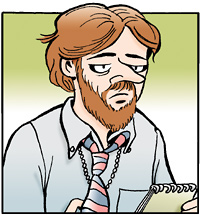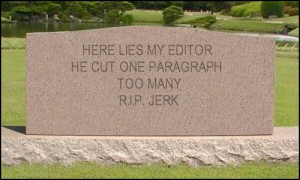Happy Double Ten Day, everyone. In Taiwan, they’re setting off firecrackers, dancing in the streets and still fretting about the loss of the mainland.
Tampa Bay Tribune: “Um, Never Mind.”
Tampa Bay residents took a break from following the success of their hometown baseball team to scream bloody murder about recent changes to the hometown newspaper. The Tampa Bay Tribune redesigned just one week ago, collapsing multiple news sections into a single main section and reorganizing several features. The paper also broadly cut the length of news stories.
The changes apparently didn’t sit well with readers, some 300 of whom canceled subscriptions while 10 times that many called or wrote letters of protest. “Apparently the folks who came up with the idea for New Coke have finally found employment designing newspapers,” read one letter.
Tribune executive editor Janet Coats listened, and it didn’t take long for her to issue a mea culpa and to promise immediate changes, including a return to sections. “People want sports in a separate section. . . they want to be able to hand sections around. Turns out, we had really disrupted the way people communicate with each other in the morning,” says Eric Deggans’ account on TampaBay.com.
Give the Tribune credit for thinking outside the box, for listening and for responding quickly to comments. In atmosphere of crisis, institutions don’t have the luxury of researching their decisions to death, and they shouldn’t have the arrogance to stick with them in the face of strongly negative reaction. We believe the Tribune will get brownie points from its readers for listening, which it richly deserves, because it must’ve been a helluva rough week in that newsroom.
Miscellany
Journalism iconoclast Patrick Thornton asks readers to take themselves back 10 years and describe how they would do journalism differently. Always perceptive commentator Tim Windsor responds with a 15-point laundry list of suggestions, many of which would work just as well today. There are a few disconnects in Windsor’s commentary – mySQL was barely known in 1998 — but his advice is sound for publishers who still talk about “eyeballs” and “lock-in.” (via Mark Hamilton)
A comment posted on Gannett Blog notes that revenues at USA Today are running 11% under plan on a budget of 1% under plan. “Someone has to make up for that 10 percent difference,” the anonymous commenter writes. “That is not even taking into account a prospective collapse in Christmas advertisements.” USA Today employees are wondering if they should file for back overtime pay given the likelihood of layoffs.
Newsosaur Alan Mutter has a creative idea for the growing ranks of newspapers that are scrapping unprofitable Monday editions and scaling back to six days a week. Why not create a special interest edition on a popular topic like sports and deliver it free on Mondays instead? The savings achieved by axing a single edition don’t amount to much in light of the formidable fixed costs that most newspapers maintain, Mutter says. Newspapers would be better off swallowing the modest incremental cost of continuing to publish on Mondays while giving readers a product they really want and salespeople something exciting to sell. It makes sense to us.
The Wall Street Journal confirms speculation that the New York Times will shut down the web site of sister paper International Herald Tribune and host the news instead on a co-branded “global edition” of NYTimes.com. The Journal also reports that the Houston Chronicle will lay off 10 employees after failing to reach its goal of 90 volunteers for a buyout program. (via Romenesko)
The UK’s Express Newspapers group has been so shaken by circulation declines that it has sharply cut back on staff and taken to letting some reporters post their stories directly to the printed page. The resulting gaffes prompted one unidentified staff member to send a sharp rebuke to his colleagues about their sloppiness — including a reference to a couple from Wales as being English and a description of an island as “floating” (islands don’t float) — and to identify 20 serious errors in the most recent Sunday edition. Rival Guardian gleefully tells all.
And Finally…
Back in May we marked the launch of a new blog called Praying for Papers, with the stated purpose of encouraging “anyone who is touched by this shift in our industry to include it each day in their prayer life.” Having noted its launch, we feel compelled to point out that the most recent post was on July 11, when author Mike Koehler said he was going on vacation. We haven’t heard from him since. Either he’s having a great vacation, his prayers have been answered, or he’s given up hope. We’re not sure which.



![John McIntyre McIntyre [cq]](http://www.newspaperdeathwatch.com/wp-content/uploads/2008/09/mcintyre.jpg)







